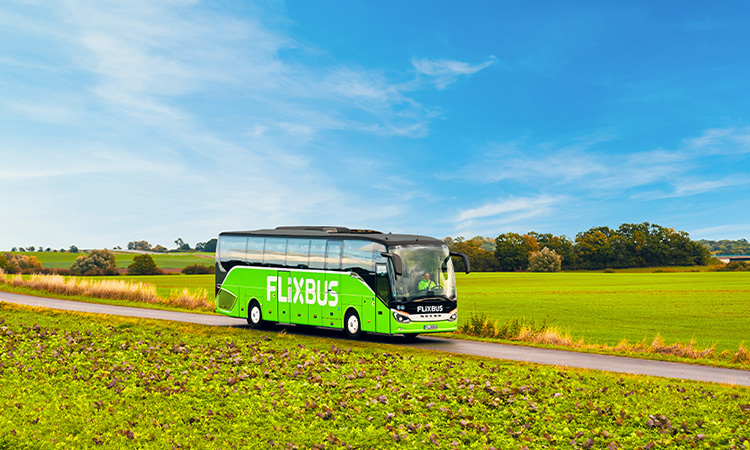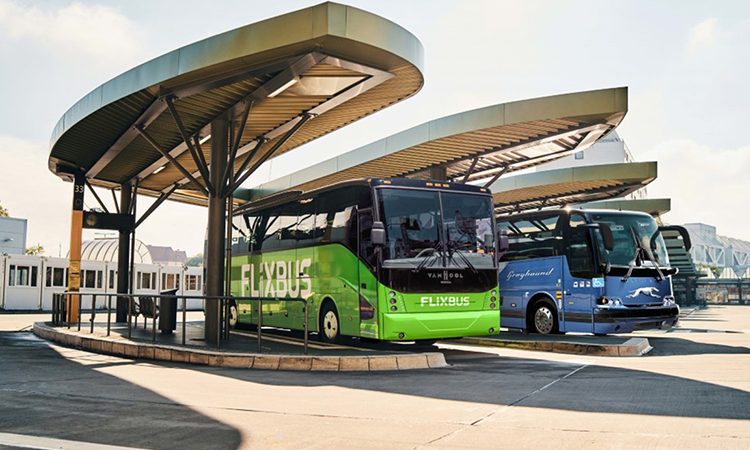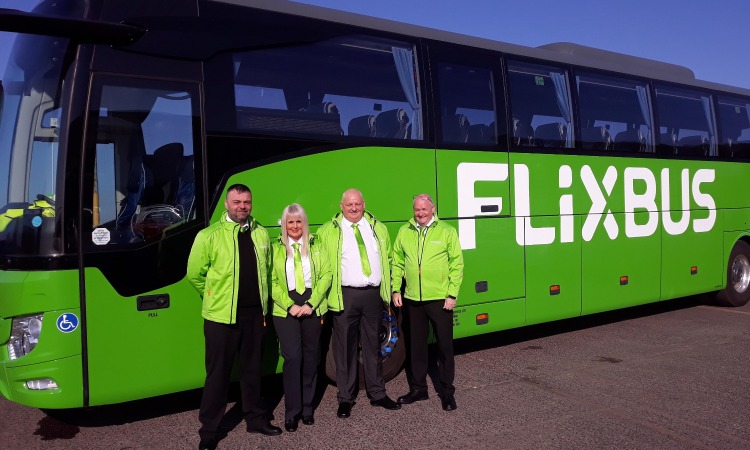Empowering the workforce with technology
- Like
- Digg
- Del
- Tumblr
- VKontakte
- Buffer
- Love This
- Odnoklassniki
- Meneame
- Blogger
- Amazon
- Yahoo Mail
- Gmail
- AOL
- Newsvine
- HackerNews
- Evernote
- MySpace
- Mail.ru
- Viadeo
- Line
- Comments
- Yummly
- SMS
- Viber
- Telegram
- Subscribe
- Skype
- Facebook Messenger
- Kakao
- LiveJournal
- Yammer
- Edgar
- Fintel
- Mix
- Instapaper
- Copy Link
Posted: 2 June 2023 | Elliot Tabachnik - FlixBus | No comments yet
Elliot Tabachnik, Domain Product Owner for the Operations Domain at FlixTech, provides insight into how FlixBus is leveraging technology to empower its workforce to deliver a superior customer experience in today’s rapidly evolving transportation industry through a combination of AI-driven decision-making, connected communication platforms and new technological developments.


Credit: FlixBus
In today’s rapidly evolving transportation industry, technology has become a critical tool for improving operations and enhancing the customer experience. As a leader in the market, FlixBus is leveraging technology to stay ahead of the competition and is empowering its workforce to deliver a superior customer experience.
E-learning platforms play a key role in helping our workforce to transition into new technologies and features that they face”
We have been working on implementing systems to support our workforce communication, increase efficiency and provide real-time access to important data and information when it comes to making quick decisions. All of this is based on technologies that we have been working with and developing to ensure a better customer experience and smoother operations. E-learning platforms play a key role in helping our workforce to transition into new technologies and features that they face.
So, let’s dive into a few of the technological key areas that our workforce deals with, daily.
An all-in-one on-board crew app
At FlixBus, our operations are powered by our all-in-one on-board crew app. This app serves as the central hub of information and action for our employees, including:
- Drivers
- Hosts
- Train attendants
- Station personnel.
Our driver app has evolved over time with the implementation of new technologies, but its primary purpose remains the same – to ensure a contactless and digital check-in process for passengers. However, the app does much more than that now.
With our driver app, we aim to improve the overall experience of our passengers and make the lives of our drivers easier and more efficient. And AI is playing a bigger and bigger role in this”
We use artificial intelligence (AI) driven decision-making and information capabilities, which allow our systems to automatically provide drivers with GPS navigation upon check-in. This means that we can show them the most efficient route to their next destination and estimate their time of arrival using artificial intelligence. In addition, if the bus is delayed, we can automatically notify passengers at the next stop.
The introduction of AI in the app allows us to calculate and predict traffic on suggested routes, as well as inform passengers of their expected arrival time with greater accuracy than before. This feature also relieves drivers of the burden of monitoring incoming traffic and choosing alternate routes to minimise delays when buses fall behind schedule.
With our driver app, we aim to improve the overall experience of our passengers and make the lives of our drivers easier and more efficient. And AI is playing a bigger and bigger role in this as the technology keeps developing.


Credit: FlixBus
Connected communication platform
Our on-board crew app is not just a tool for passenger check-ins and GPS navigation. It also serves as our main communication platform for the operational workforce, connecting them with our traffic control team.
This digital communication capability is key to ensuring that our workforce is equipped to make the most efficient decisions possible and ensure passenger safety”
Let us use this example: if station personnel detect an issue with a bus during the departure check, such as a cracked windshield that could impede the driver’s vision, they can report it via the on-board crew app. This information is immediately relayed to our traffic control team, who can evaluate the situation, inform the driver and ground the bus, if necessary.
This is one example where our workforce can use the app to make real-time decisions and respond quickly to any situations that arise. This digital communication capability is key to ensuring that our workforce is equipped to make the most efficient decisions possible and ensure passenger safety. If a replacement bus is needed, we can source it quickly and minimise disruption to our passengers because of the connectivity that the app offers. This also relieves pressure on the drivers to make calls in the field, and they will be better informed on what the next step will be, so that they can focus on their primary jobs.
This app is critical for our decision-making and for ensuring a smooth day for both employees and passengers.
AI and new technologies at the core of our developments
We naturally also closely monitor new technological developments to understand how they can impact our workforce. Among the latest advancements in the industry are things like 5G, AI and electrification.
5G has not had any major effect on the lives of our drivers or other personnel. Our digitalised systems work basically the same as before and, while the connection might be faster, it has not impacted our processes or technology significantly.
Instead, we see somewhat of an impact for our passengers. On our routes, and with providers that offer it, our Wi-Fi is now run on 5G where possible, meaning that they have faster internet connection in the vehicle.
AI plays a critical role in our operations, particularly in analysing passenger feedback… [it] enables us to perform sentiment analysis on different categories like driver behaviour, facilities, bus status, punctuality and more”
On the other hand, electrification has had a more significant impact on our operations. We are constantly exploring multiple angles of electrification, including hydrogen power, biogas concepts, electric buses and other alternative drives.
We’ve been piloting electric buses since 2018 and are in the concept phase with a manufacturer for developing and testing hydrogen-powered buses.
In addition to this, we are also working with a simulation company to understand the impact that solar panels could have on fuel needs as we drive.
What we have seen so far is that, when working with an electrified bus, our operational costs are much lower, and it is something that we keep exploring and implementing, as it is key to our goals of becoming carbon neutral.
AI plays a critical role in our operations, particularly in analysing passenger feedback. With around 600,000 feedback messages received annually in various languages, AI enables us to perform sentiment analysis on different categories like driver behaviour, facilities, bus status, punctuality and more.
This analysis helps us to identify the areas that require improvement and allows us to communicate with our bus partners better. With it, we can pinpoint issues and understand what does and doesn’t work well, which is crucial to our success.
You might notice that I am talking about partners and not drivers here. And the reason is that we don’t typically work directly with the drivers, due to our unique business model.


Credit: FlixBus
Flix’ unique business model and upskilling the force
At FlixBus, we operate through a unique business model where we partner with independent bus companies instead of hiring bus drivers or owning buses. This means that our partners handle the day-to-day operations of running our services, including owning and maintaining the buses and hiring drivers.
To ensure that all of our employees are up-to-date with our technological advances, we have implemented systems to help upskill drivers and other staff”
Meanwhile, FlixBus handles, amongst other things, marketing, customer service, traffic control, technology and payment processing for our partners.
To ensure that all of our employees are up-to-date with our technological advances, we have implemented systems to help upskill drivers and other staff.
An example of this is when we acquired Greyhound in October 2021 and then recently switched their operational technology to run on the FlixBus system instead. We faced the major challenge of upskilling roughly 1,000 drivers on how to use the FlixBus driver app and other new features, such as switching from iPhone to Android, working with seat assignments (which were new to Greyhound) and a new GPS navigation system, amongst other things.
To address this challenge, we implemented a three-step process:
- Firstly, we trained the managers in a ‘train-the-trainer’ programme, who would work directly with the drivers on a day-to-day basis to ensure that any questions could be answered
- Secondly, we introduced FlixUni (in this case, GreyhoundUni), a learning management system where the drivers could take lessons on the different aspects of the Driver App. This includes learning about features like seat assignments, passenger check-in, GPS navigation and more
- Lastly, we hosted Q&A sessions as webinars for drivers to ask questions and get refreshers on all of the new features.
This was all done to ensure that our workforce was prepared for the platform switch that they experienced on 22 February 2023. And the response was great; the workforce took well to the new learnings. It is fair to say that it has been a successful transition and upskilling of the workforce here. In fact, the first two steps are the typical way that we handle the upskilling and training of our drivers in new technologies and advancements that we see might impact the workforce directly.
So, what we see is that new technologies like AI, electrification and better connectivity have opened an avenue for us to continue to innovate how we can become more effective, while at the same time using e-learning platforms to upskill our workforce to enable a superior customer experience at Flix.
We are constantly monitoring new tools and advancements to see how we can improve as a company.
Elliot Tabachnik is Domain Product Owner for the Operations Domain at FlixTech, responsible for product strategy for FlixBus operations. The Operations Domain is made up of 11 development teams working with Flix’ Mobility Partners, as well as Greyhound, Kamil Koc and FlixTrain, to ensure the delivery of the Flix travel experience to customers.
Related topics
Intelligent Transport Systems (ITS), Mobility Services, Passenger Experience, Public Transport, Staff & Skills Development, Sustainable Urban Transport, Workplace
Issue
Issue 2 2023
Related modes
Bus & Coach
Related countries
Germany, Turkey, United States
Related people
Elliot Tabachnik








